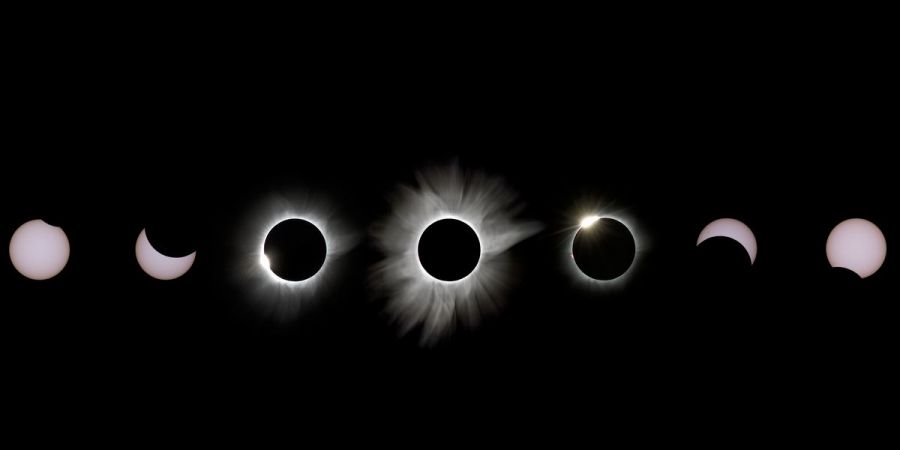

A solar eclipse is a celestial event that occurs when the Moon passes between the Sun and Earth, causing the Sun to be partially or completely obscured. This fascinating phenomenon has captivated people throughout history and continues to be a source of wonder and scientific inquiry. Let's explore the solar eclipse in more detail.
During a solar eclipse, the Moon casts a shadow on the Earth's surface, blocking the Sun's light from reaching certain areas. There are three main types of solar eclipses: total, partial, and annular. In a total solar eclipse, the Moon completely covers the Sun, creating a breathtaking spectacle as the sky darkens and stars become visible. A partial solar eclipse occurs when the Moon only partially covers the Sun, resulting in a crescent-shaped image. An annular solar eclipse happens when the Moon is at a farther distance from the Earth, causing the Sun to appear as a bright ring around the Moon.
The occurrence of a solar eclipse is relatively rare due to the specific alignment required. The Moon's orbit around the Earth is tilted, so most of the time, it appears slightly above or below the Sun from our vantage point. However, when the Moon's orbit intersects with the Earth's orbital plane around the Sun, an eclipse can happen. This alignment typically occurs a few times a year but is only visible from specific regions on Earth.
To safely observe a solar eclipse, it is crucial to take precautions to protect your eyes. Looking directly at the Sun can cause severe damage to your eyesight. Specialized solar viewing glasses or handheld viewers with solar filters are necessary to safely observe the eclipse. These devices block most of the Sun's harmful rays while allowing you to see the eclipse clearly.
Solar eclipses have played a significant role in scientific discoveries and our understanding of the universe. They have provided opportunities for astronomers to study the Sun's corona, the outermost layer of the Sun's atmosphere, which is otherwise invisible to the naked eye. Scientists have used eclipses to gather valuable data and conduct research on solar physics, the Sun's magnetic field, and other related areas of study.
Beyond their scientific importance, solar eclipses have cultural and historical significance in various societies. Many ancient civilizations viewed eclipses as powerful and mystical events, often associating them with legends, omens, or supernatural occurrences. Even today, solar eclipses draw attention and awe from people worldwide, leading to gatherings and celebrations to witness this extraordinary event.
Thanks for Reading my blog. ❤


